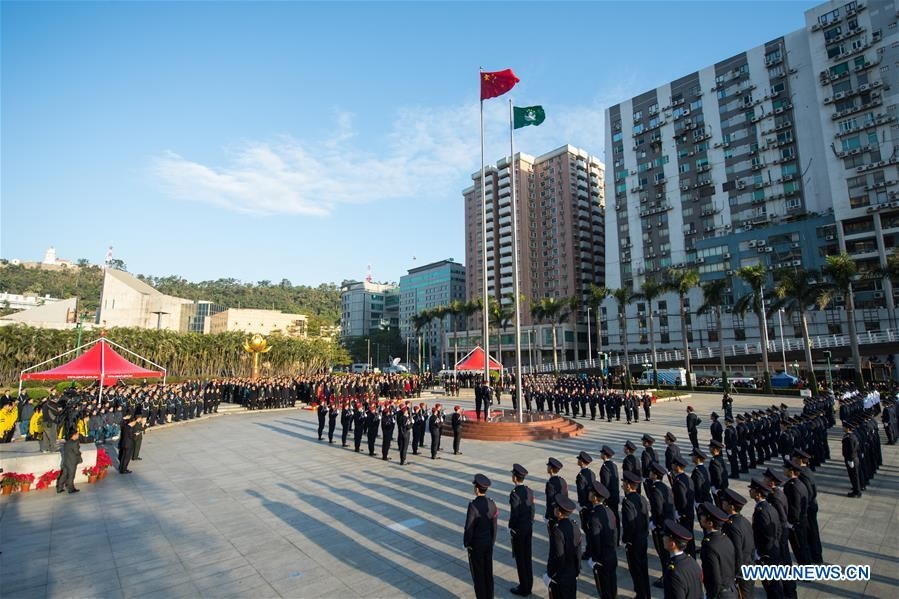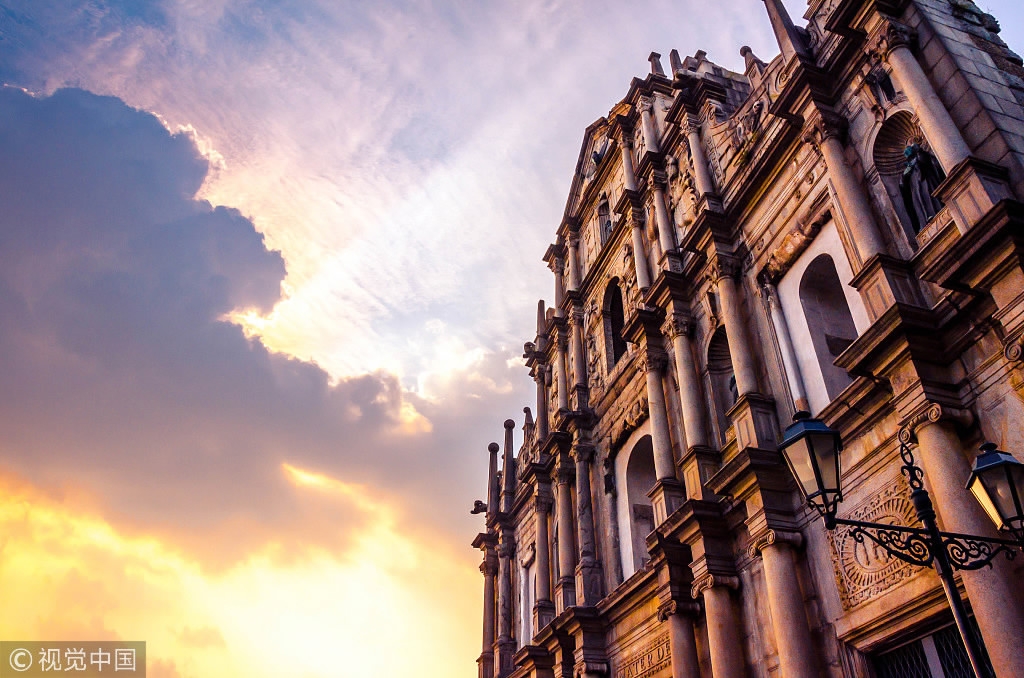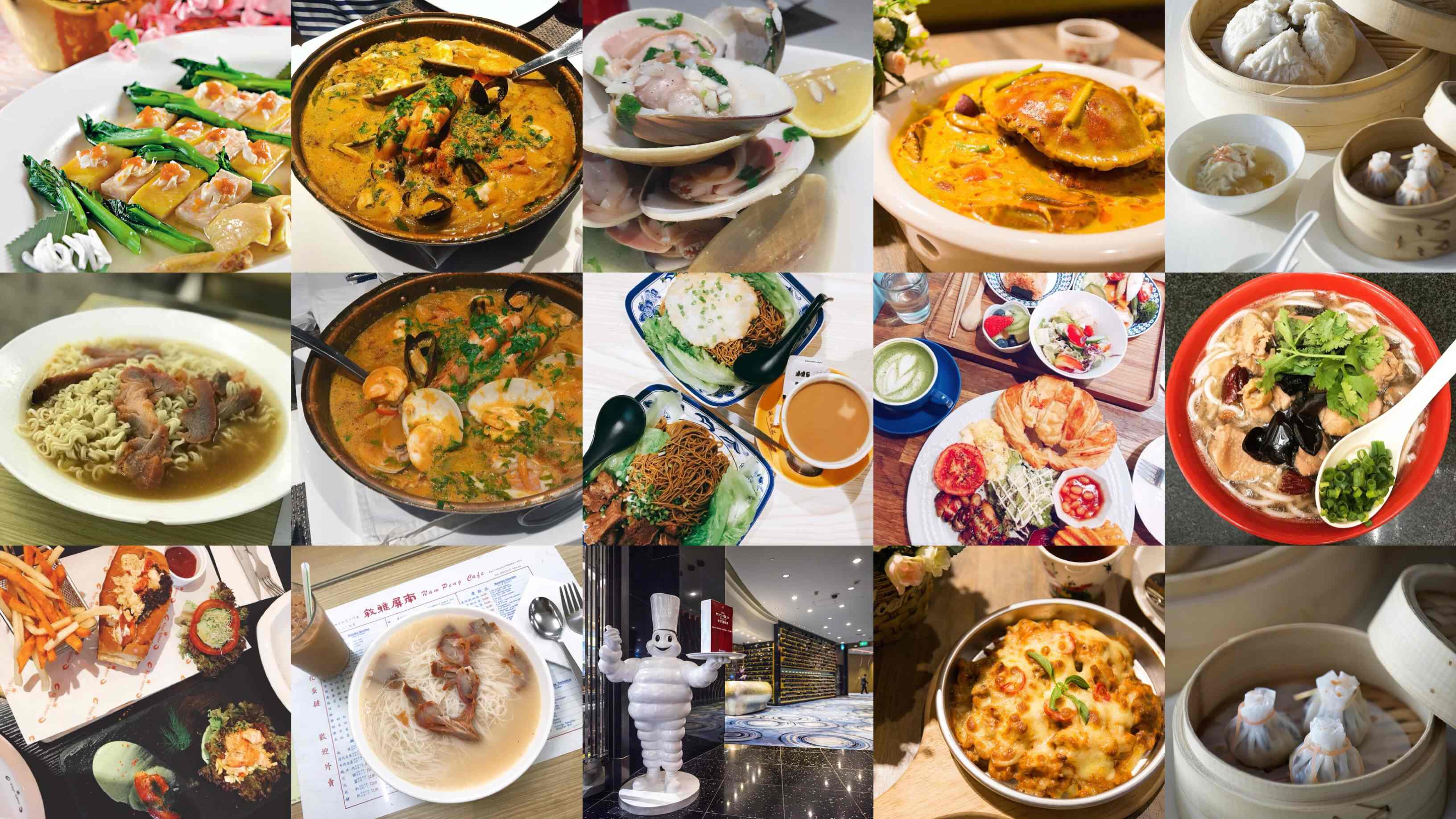
Culture
14:29, 20-Dec-2017
Macao, from BC to the 18th anniversary of the return to China
By Wei Yutong

December 20 is the 18th anniversary of Macao's return to China. The government of Macao Special Administrative Region (SAR) of the People's Republic of China held a flag raising ceremony to celebrate the 18th anniversary of return at Golden Lotus Square. Macao SAR Chief Executive Chui Sai On, head of the Liaison Office of the Central People's Government in Macao SAR Zheng Xiaosong and other major officials attended. During this week, several celebrations are held in Macao.

A flag-raising ceremony is held to celebrate the 18th anniversary of Macao's return to the motherland in Macao. /Xinhua Photo
A flag-raising ceremony is held to celebrate the 18th anniversary of Macao's return to the motherland in Macao. /Xinhua Photo
History of Macao
In 1995, archaeologists unearthed painted pottery and jade from sand dunes in Coloane Island of Macao, which got appraised as Neolithic remains, much like the antiques uncovered recently in Zhuhai (a city of Guangdong located near Macao). Those archaeological discoveries indicate human activity in Macao that can be traced back to the Neolithic Age.

Macao. /VCG Photo
Macao. /VCG Photo
In 214 BC, the First Emperor of the Qin Dynasty unified Lingnan (modern southern part of China, including modern Guandong, Guangxi, Hainan, Hong Kong and Macao) and established Nanhai, Xiang, and Guilin Prefectures there. The region of Macao came under the jurisdiction of Nanhai Prefecture (modern Guangdong). That was the first time that Macao formally became part of China, but in that period, there were very few inhabitants.
The county and prefecture of Macao had different names and ranges in different dynasties. During the Southern Song Dynasty (1127 AD~1279 AD), belonging to Xiangshan County, Macao was called Hao Jing which means inner wall of oyster, since this coastal place abounds with seafood. Xiangshan County was one of the last major battlefields for Song war against Yuan - the next dynasty of China.
Naval warfare was frequent at this region. Wen Tianxiang, the prime minister of Song was captured by Yuan's army and, while he was escorted by Yuan Navy passing through a bay near Macao, he wrote a famous poem that can be found in modern Chinese textbooks:"...everyone must die; let me but leave a loyal heart shining in the pages of history." The Southern Song was defeated in the end, but Macao served as a resettlement for many soldiers and refugees of Song. Fishing and farming in Macao developed after that, and the number of inhabitants and migrants increased by years.

Macao. /VCG Photo
Macao. /VCG Photo
In 1535, foreigners' commercial activities and trade at Macao were legalized. From the 1550s, the Portuguese started building a settlement in Macao, and they paid an annual rent of 500 taels (18.9 kilograms) of silver to the government of the Ming Dynasty in order to stay in Macao. Portuguese social and economic affairs were under the supervision of Chinese authority. From the 15th to the 18th century, development of Macao was noticeable. Macao became a significant trade port and melting pot of Eastern and Western culture.
The Qing Dynasty lost both the First Opium War (1840-1842) and the Second Opium War (1856-1860) and Portugal kept occupying Macao. In 1887, the Qing and Portuguese governments signed the Sino-Portuguese Treaty of Peking, under which China ceded the right of "perpetual occupation and government of Macao by Portugal". Macao sovereignty was transferred. Slave trading and gambling thrived there.

Macao. /VCG Photo
Macao. /VCG Photo
In 1949, the People's Republic of China was founded. The government declared the Sino-Portuguese Treaty of Peking invalid. In 1979, China and Portugal officially established diplomatic relations, and those two countries agreed to define Macao as "a Chinese territory under temporary Portuguese administration". The two governments commenced four negotiations about Macao during 1986, and then in 1987 they signed the Sino-Portuguese Joint Declaration which making Macao one of the special administrative regions of China
On December 20, 1999, Chinese government assumed formal sovereignty over Macao, and the constitutional "one country, two systems" policy has been implemented in this region since that day.

Macao. /VCG Photo
Macao. /VCG Photo
Macao today
Under the principle of "one country, two systems", Macao enjoys a high degree of autonomy in almost all areas except regional defense and diplomatic relations, which are the responsibility of the Central People's Government of China.
Macao connects China to the international market as a free port with a long history, as well as a member of the World Trade Organization (WTO) and International Monetary Fund (IMF). After the return of Macao, the Chinese mainland has been both the key contributor to Macao's tourism industry - the newly-rising pillar industry of Macao during nearly two decades - and Macao's largest trade partner.

Macao. /VCG Photo
Macao. /VCG Photo
Macao offers a language link between China and the Portuguese-speaking countries. The official languages are Cantonese and Portuguese, while other languages such as Mandarin, English, Hokkien and Macanese are also spoken by many local communities, Mandarin and English have become especially common during the last 18 years.

Macao. /VCG Photo
Macao. /VCG Photo
Religions are given a considerable acceptance in Macao. In the past three centuries, Macao was an important gateway for foreign religions looking to access China as it has several local religions, including local folk religion, Buddhism, Taoism, Christianity, Catholicism and so on. Both temples and churches can be found in this region. Traditional Macanese believe in the folk religion for Macao and neighboring coastal regions, trusting a goddess named Mazu, who is thought to protect fishermen and sailors on the sea. When the first group of Portuguese reached Macao, they asked a native what the name of the place was, however, the native thought them pointing at a temple for Mazu and asking the temple's name, so that he told the Portuguese its name was Mazu. The Portuguese then called the place "Macau" (as Macao in English) – that is the origin of name "Macao".

Ruins of St. Paul's. /VCG Photo
Ruins of St. Paul's. /VCG Photo
Eastern and Western cultures, traditions, customs and architectures mix in Macao. The Historic Center of Macao is a collection of over 20 locations, including churches, temples, squares and streets. In 2005 it was added to the UNESCO World Heritage List and described by UNESCO as:"With its historic streets, residences, religious and public Portuguese and Chinese buildings, the historic center of Macao provides a unique testimony to the meeting of aesthetic, cultural, architectural and technological influences from East and West." Ruins of St. Paul's, one of the most well-known spots in Macao, is situated at this area.

The Venetian Macao. /VCG Photo
The Venetian Macao. /VCG Photo
Macao is the only territory in China where gambling is legal, and its casino tourism is famous. Since the return of Macao, the government re-regulated gambling activities in Macao. The Venetian Macao is the largest casino in the world and largest single structure hotel building in Asia.

Macao also has delicious food, such as the popular Portuguese egg tart and pork chop bun, that attracts both locals and visitors alike.

SITEMAP
Copyright © 2018 CGTN. Beijing ICP prepared NO.16065310-3
Copyright © 2018 CGTN. Beijing ICP prepared NO.16065310-3